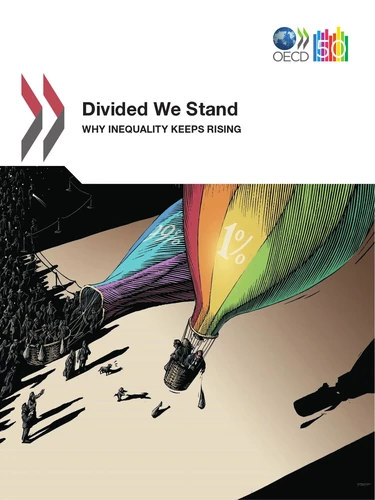Divided We Stand. Why Inequality Keeps Rising
Par :Formats :
Disponible dans votre compte client Decitre ou Furet du Nord dès validation de votre commande. Le format PDF est :
- Compatible avec une lecture sur My Vivlio (smartphone, tablette, ordinateur)
- Compatible avec une lecture sur liseuses Vivlio
- Pour les liseuses autres que Vivlio, vous devez utiliser le logiciel Adobe Digital Edition. Non compatible avec la lecture sur les liseuses Kindle, Remarkable et Sony
 , qui est-ce ?
, qui est-ce ?Notre partenaire de plateforme de lecture numérique où vous retrouverez l'ensemble de vos ebooks gratuitement
Pour en savoir plus sur nos ebooks, consultez notre aide en ligne ici
- Nombre de pages400
- FormatPDF
- ISBN978-92-64-11953-6
- EAN9789264119536
- Date de parution05/12/2011
- Copier Coller01 page(s) autorisée(s)
- Protection num.Digital Watermarking
- Taille10 Mo
- Transferts max.Autorisé
- Infos supplémentairesPDF avec Watermark
- ÉditeurOECD
Résumé
In the three decades to the recent economic downturn, wage gaps widened and household income inequality increased in a large majority of OECD countries. This occurred even when countries were going through a period of sustained economic and employment growth. This report analyses the major underlying forces behind these developments. It examines to which extent economic globalisation, skill-biased technological progress and institutional and regulatory reforms have had an impact on the distribution of earnings.
The report further provides evidence of how changes in family formation and household structures have altered household earnings and income inequality. And it documents how tax and benefit systems have changed in the ways they redistribute household incomes. The report discusses which policies are most promising to counter increases in inequalities and how the policy mix can be adjusted when public budgets are under strain.
The report further provides evidence of how changes in family formation and household structures have altered household earnings and income inequality. And it documents how tax and benefit systems have changed in the ways they redistribute household incomes. The report discusses which policies are most promising to counter increases in inequalities and how the policy mix can be adjusted when public budgets are under strain.
In the three decades to the recent economic downturn, wage gaps widened and household income inequality increased in a large majority of OECD countries. This occurred even when countries were going through a period of sustained economic and employment growth. This report analyses the major underlying forces behind these developments. It examines to which extent economic globalisation, skill-biased technological progress and institutional and regulatory reforms have had an impact on the distribution of earnings.
The report further provides evidence of how changes in family formation and household structures have altered household earnings and income inequality. And it documents how tax and benefit systems have changed in the ways they redistribute household incomes. The report discusses which policies are most promising to counter increases in inequalities and how the policy mix can be adjusted when public budgets are under strain.
The report further provides evidence of how changes in family formation and household structures have altered household earnings and income inequality. And it documents how tax and benefit systems have changed in the ways they redistribute household incomes. The report discusses which policies are most promising to counter increases in inequalities and how the policy mix can be adjusted when public budgets are under strain.


















